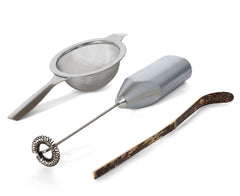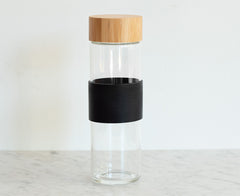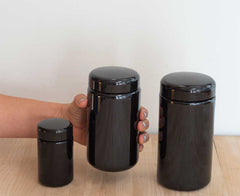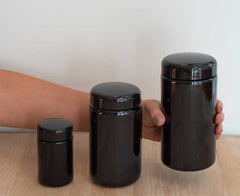What is it?
Matcha is 100% green tea, nothing else. But it’s a very special tea grown under unique conditions. Its leaves aren’t steeped; they’re ground into a powder. You then add hot water, whisk it, and drink the brew, leaves and all. It is an exceedingly healthy drink.
Where is it from?
Japan. From small family coops near Kyoto.
Does it have caffeine?
Yes, but not much: 25mg or so per cup (in contrast, a brewed cup of coffee has about 100mg. So it has about a quarter the caffeine of coffee.
How do you make it?
You place a small amount of matcha into a cup or small creamer, add a few ounces of hot (but not boiling) water, and whisk it. Traditionally a small bamboo whisk is used, but we find that an electric, handheld milk frother wand works much better. You can then pour the matcha into a smaller cup for a more elegant feel, or just drink it in the same cup you made it in. A serving is about two ounces, or about the size of a macchiato. It can also be made in larger sizes, using more matcha. It’s also delicious iced, made in a blender with water and ice.
Do I have to worry about radiation from Fukushima?
No. Both our producers and Breakaway Matcha have conducted extensive testing on samples. No traces of radiation have been found.
How much matcha is needed for a serving?
About a gram, or roughly ½ teaspoon. A 30-gram tin of matcha would thus contain 30 servings.
How will I feel after drinking a cup?
You will notice a heightened awareness and an easier ability to “pay attention” to whatever you’re doing. Yet you remain very calm.
You get a clean stream of energy and mental clarity that is great for getting work done. It’s especially good for writing software code, for studying new material, and anything that requires intense concentration. Fantastic for fighting fatigue.
Why does it taste so good?
It tastes nothing like other teas?It’s loaded with umami (a Japanese term for “savory deliciousness,” and also the fifth scientific taste, along with salt, sweet, sour, and bitter), and natural sweetness. It has a robust acid structure, and a long, long finish – sometimes 30 seconds or more, more akin in complexity to a great wine than another tea.
Why is it so much more expensive than other teas?
Producing artisanal matcha is an extremely labor-intensive process that hasn’t changed much in nearly 1,000 years. Every step of every process, from growing, harvesting, and processing, is done by hand, using slow, time-tested techniques. Labor costs in Japan are also much higher than those in all other tea-producing countries.
Why is it so healthy?
It has extremely high levels of antioxidants and phytonutrients. Because you’re “eating” the tea, as opposed to just steeping it and tossing the bag/leaves, you get at least 10 times (and up to 20x) the nutritional content of steeped green tea. Most of the powerhouse properties of green tea can’t be extracted with water; you have to consume the entire leaf to get all the health benefits.
Why is Breakaway Matcha served at some of the highest-ranked restaurants in the world?
Our blends are exceedingly rare, and the epicurean properties of these teas are some of life’s finest epicurean pleasures. They really do rival great wine in terms pure drinking pleasure. They also serve as a palate cleanser.
How much of this stuff is there?
We have very limited quantities of hyperpremium matcha, much of which is already allotted to restaurants. Once it runs out, it cannot be replaced until the next harvest (in May of each year). We have much larger quantities of culinary matcha available.




